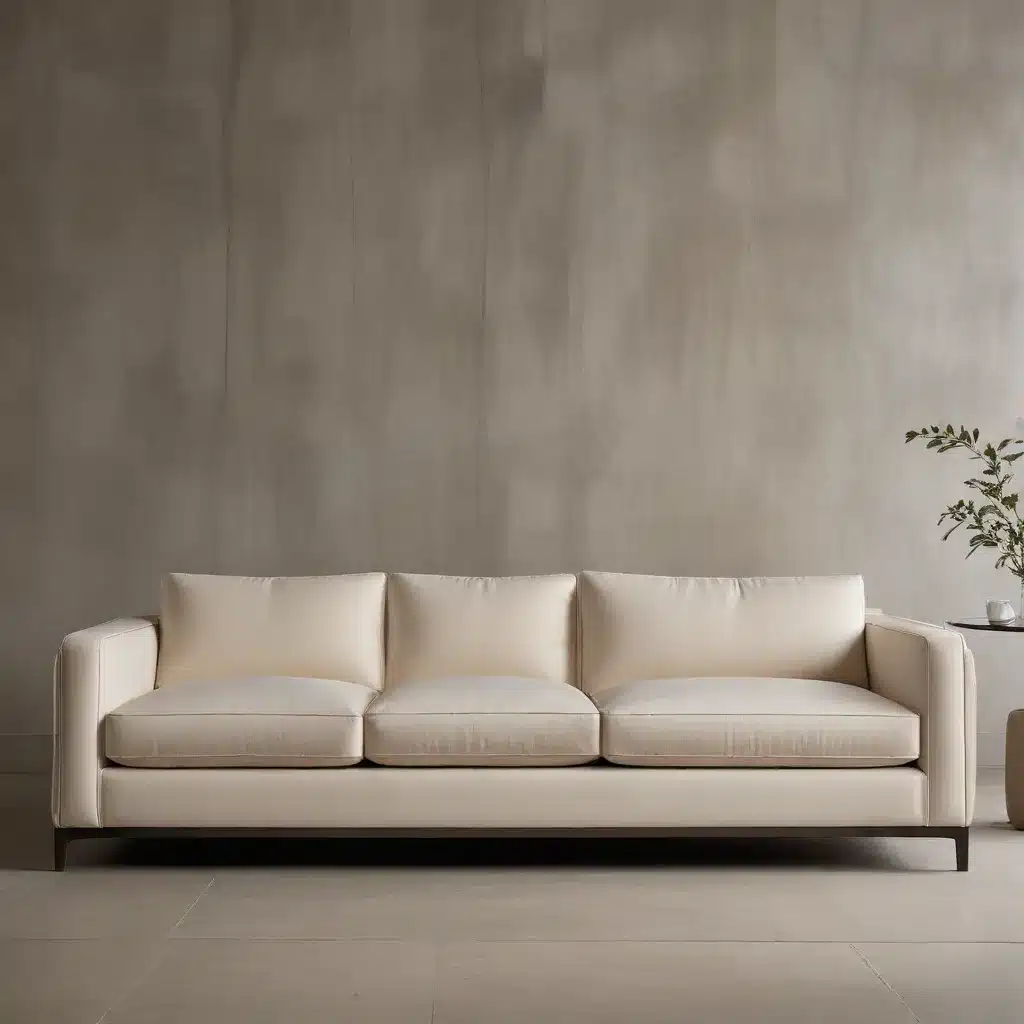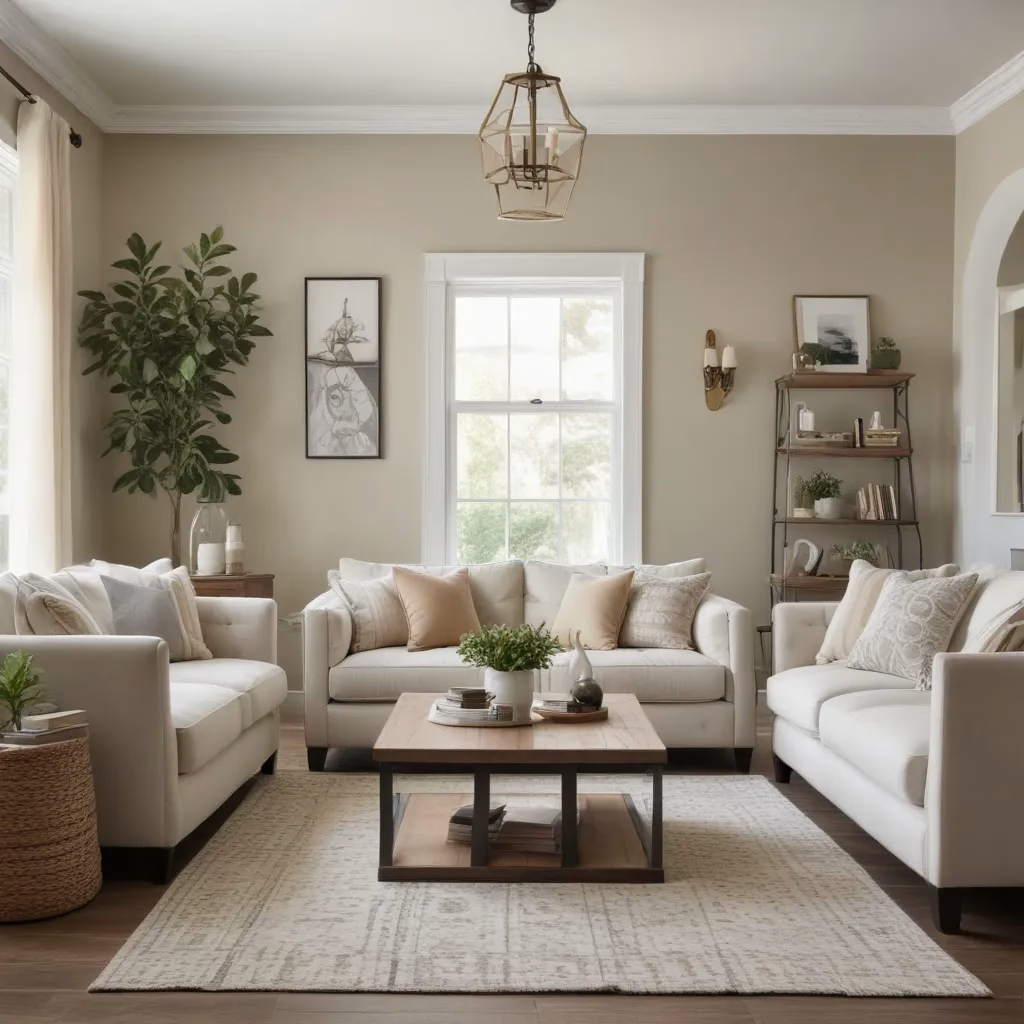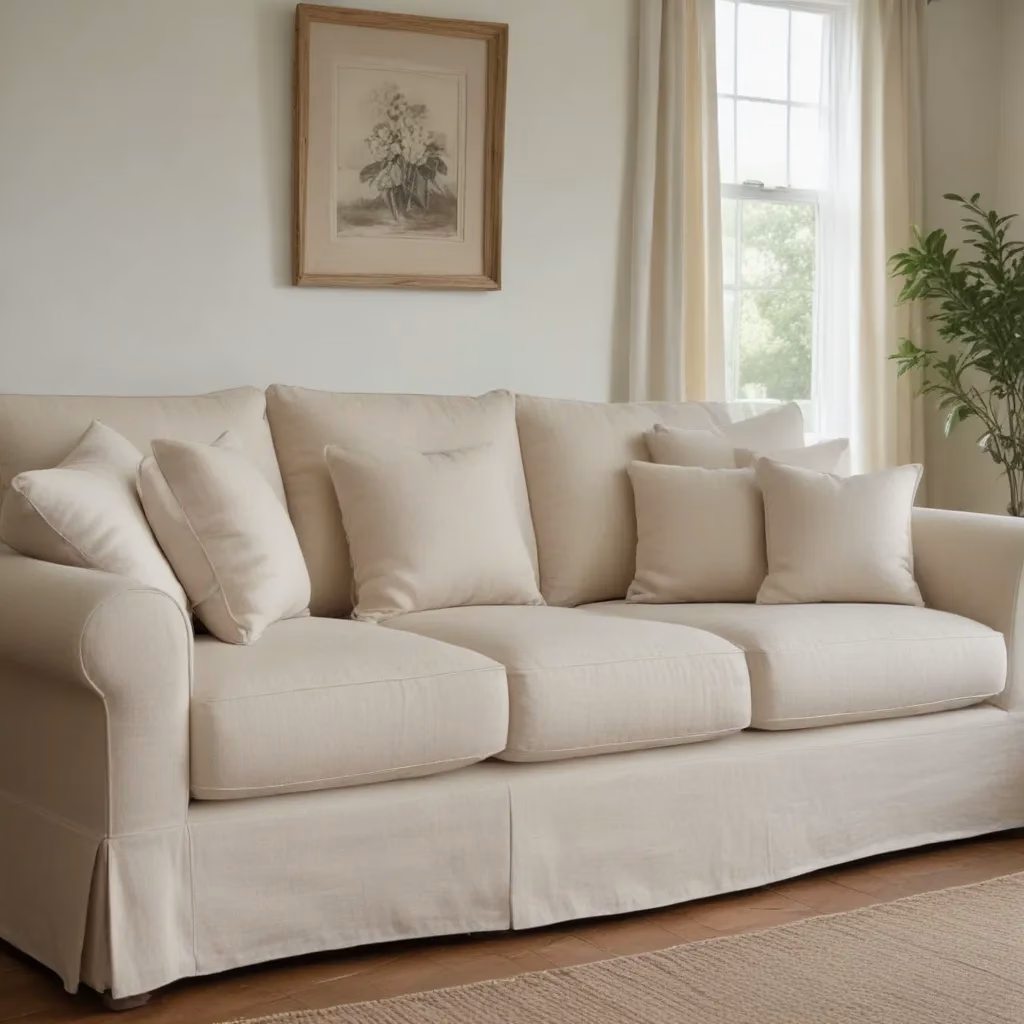
The Evolution of Sofa Aesthetics
As a furniture specialist with years of experience, I’ve witnessed firsthand the fascinating evolution of sofa design. The shift towards sleek and simple silhouettes in contemporary sofa design is more than just a passing trend—it’s a reflection of our changing lifestyles and aesthetic preferences.
When I first started in this industry, overstuffed, ornate sofas were all the rage. Clients would come into our showroom asking for pieces that made bold statements with their intricate detailing and voluminous forms. But over time, I’ve observed a gradual yet significant shift towards cleaner lines and more minimalist shapes.
This transition didn’t happen overnight. It’s been influenced by various factors, including the rise of urban living, the popularity of open-plan spaces, and a growing appreciation for functional design. As apartments got smaller and our lives became more fast-paced, the need for furniture that could adapt to different settings and serve multiple purposes grew.
The Appeal of Simplicity in Modern Interiors
There’s something undeniably appealing about a sofa with a simple silhouette. In my consultations with clients, I often find myself explaining the benefits of these streamlined designs. For one, they’re incredibly versatile. A sleek sofa can seamlessly blend into various interior styles, from ultra-modern to eclectic.
I remember working with a couple who were moving from a traditional suburban home to a loft in the city. They were worried about how their existing furniture would fit into their new space. When I showed them a selection of sofas with clean lines and simple shapes, their eyes lit up. They realized that these pieces could help them transition their style without completely starting from scratch.
Moreover, simple silhouettes have a timeless quality. In a world where trends come and go at lightning speed, investing in a sofa with a classic form ensures that it won’t look dated in a few years. This longevity is not just aesthetically pleasing—it’s also economically and environmentally responsible.
Balancing Form and Function
While the trend towards simplicity is undeniable, it’s important to note that it doesn’t come at the expense of comfort. In fact, some of the most comfortable sofas I’ve had the pleasure of testing have been those with the cleanest lines.
Modern manufacturing techniques and innovative materials have made it possible to create sofas that are both visually lightweight and incredibly cozy. I’ve sat on sofas that look like they could float away but feel as supportive as a firm mattress.
One of my favorite examples of this balance between form and function is a modular sofa system I recently recommended to a client. From the outside, it looked like a series of simple, geometric shapes. But each piece could be rearranged to create different seating configurations, and the cushions were filled with a high-density foam that provided excellent support.
The Role of Texture in Simple Designs
With simpler silhouettes, texture becomes increasingly important. I often advise my clients to pay close attention to the upholstery fabric when choosing a minimalist sofa. The right texture can add depth and interest to even the most streamlined form.
I once worked with a client who was set on a particularly sleek sofa design but was worried it might look too stark in her living room. We solved this by selecting a rich, textured bouclé fabric. The nubby surface added visual interest and tactile appeal without compromising the clean lines of the sofa.
Similarly, leather can be an excellent choice for simple sofas. As it ages and develops a patina, it adds character to the piece without cluttering its silhouette. I’ve seen leather sofas with the simplest of shapes become the focal point of a room simply because of the beautiful way their upholstery has aged.
Color Choices for Contemporary Sofas
When it comes to color, the trend towards simplicity doesn’t necessarily mean a world of beige and gray (although these neutral tones certainly have their place). I’ve noticed an increasing willingness among my clients to experiment with bold colors, especially when the sofa’s shape is understated.
A vibrant hue can transform a simple sofa into a statement piece. I recently helped a client select a bright yellow sofa with a clean, boxy shape. Against the backdrop of their neutral walls and flooring, it became a stunning focal point that energized the entire space.
That said, neutral colors remain popular for good reason. They offer flexibility and longevity that bold colors can’t always match. A cream or light gray sofa with a simple silhouette can serve as a beautiful canvas for colorful throw pillows and blankets, allowing for easy updates as tastes change over time.
Incorporating Simple Sofas into Different Design Styles
One of the great advantages of sofas with simple silhouettes is their adaptability to various design styles. I’ve helped clients integrate these pieces into spaces ranging from ultra-modern to rustic chic.
In more traditional settings, a sleek sofa can provide a refreshing contrast. I once worked with a client who lived in a Victorian-era home filled with antiques. We chose a sofa with a clean, contemporary shape upholstered in a rich velvet fabric. The juxtaposition of the modern form against the ornate surroundings created a captivating visual dialogue.
For minimalist interiors, simple sofas are a natural fit. They contribute to the uncluttered aesthetic without competing for attention. In these spaces, I often recommend sofas with particularly slim profiles to maintain the sense of openness and airiness.
Even in eclectic interiors, which might seem at odds with simplicity, streamlined sofas can play an important role. They can serve as a calm anchor amidst a mix of styles and periods, providing a visual resting place for the eye.
The Impact of Technology on Sofa Design
Advancements in technology have played a significant role in the trend towards simpler sofa designs. Computer-aided design and manufacturing processes have made it possible to create precise, clean lines that would have been challenging to achieve in the past.
Moreover, new materials and construction techniques have allowed for greater experimentation with form. I’ve seen sofas that seem to defy gravity, with slim legs supporting generous seating areas—a feat made possible by innovative internal structures.
Technology has also influenced the functionality of sofas. Many contemporary designs incorporate features like built-in USB ports or wireless charging pads. These additions are seamlessly integrated, maintaining the clean aesthetic while adding practical value.
Sustainability and Simple Sofa Design
The shift towards simpler sofa designs aligns well with growing concerns about sustainability in the furniture industry. Streamlined shapes often require less material to produce, potentially reducing the environmental impact of manufacturing.
Additionally, the timeless nature of these designs encourages longevity. I always emphasize to my clients that a well-made sofa with a classic, simple shape is an investment that can last for decades, reducing the need for frequent replacements.
Many manufacturers are also exploring eco-friendly materials and production methods. I’ve been particularly impressed by some of the innovative fabrics made from recycled plastics that are now available for upholstery. These materials can be incredibly soft and durable, often indistinguishable from traditional textiles.
The Future of Sofa Design
As we look to the future, I believe the trend towards sleek and simple silhouettes in sofa design will continue to evolve. We’re likely to see even more integration of technology, perhaps in ways we can’t yet imagine.
I also anticipate a growing emphasis on modularity and adaptability. As our living spaces and lifestyles continue to change, furniture that can change with us will become increasingly valuable. Simple, modular sofa systems that can be reconfigured to suit different needs and spaces are likely to gain popularity.
However, I don’t think this means the death of more traditional or ornate designs. In my experience, design trends often move in cycles. While simplicity is currently dominant, I wouldn’t be surprised to see a resurgence of more decorative styles in the future, perhaps incorporating elements of both simplicity and ornamentation in new and exciting ways.
Caring for Your Contemporary Sofa
Maintaining a sofa with a simple silhouette can be easier in some ways than caring for more complex designs. There are fewer nooks and crannies for dust and debris to accumulate, making regular cleaning more straightforward.
However, because these sofas often rely on their clean lines for their aesthetic impact, it’s crucial to keep them in good shape. I always advise my clients to follow the manufacturer’s care instructions closely, particularly when it comes to cleaning the upholstery.
For fabric sofas, regular vacuuming is essential to prevent dust and dirt from becoming embedded in the fibers. Most spills can be dealt with using a clean, damp cloth, but it’s important to blot rather than rub to avoid damaging the fabric.
Leather sofas with simple shapes can be particularly striking, but they do require specific care. I recommend using a leather conditioner every 6-12 months to keep the material supple and prevent cracking. This is especially important for sofas with clean lines, as any damage to the upholstery can be quite noticeable.
Making the Most of Your Simple Sofa
One of the joys of working with sofas that have clean, simple silhouettes is the opportunity they provide for personalization. These pieces serve as fantastic blank canvases that can be styled in countless ways.
I often suggest to my clients that they use accessories to add personality to their sleek sofas. Throw pillows in various textures and patterns can introduce visual interest without compromising the sofa’s clean lines. A carefully chosen throw blanket can add a pop of color or an extra layer of texture.
The space around the sofa is just as important as the piece itself. I’ve found that pairing a simple sofa with a statement coffee table or an eye-catching area rug can create a beautiful contrast. The key is to strike a balance—let the sofa’s clean lines shine while using the surrounding elements to add depth and interest to the overall composition.
Selecting the Right Simple Sofa for Your Space
Choosing the perfect sofa with a sleek, simple silhouette requires careful consideration. In my consultations, I always start by discussing the client’s lifestyle and how they plan to use the sofa. A minimalist design might look fantastic, but it needs to meet your practical needs as well.
Consider the scale of your space. A low-profile sofa with slim arms might be perfect for a small apartment, helping to create a sense of openness. In a larger room, a sectional with clean lines can provide ample seating without appearing bulky.
Don’t forget about seat depth and height. These factors can greatly affect comfort, especially if you’re taller or shorter than average. Many contemporary sofas offer different options for seat depth, allowing you to customize the piece to your preferences.
Lastly, think about how the sofa will age. Simple designs can be timeless, but only if they’re well-constructed. I always recommend investing in the best quality you can afford. A well-made sofa with a simple silhouette can be a piece you’ll love for years to come.
In conclusion, the dominance of sleek and simple silhouettes in contemporary sofa design is more than just a trend—it’s a reflection of our evolving lifestyles and aesthetic preferences. These designs offer versatility, timelessness, and a perfect canvas for personal expression. As we move forward, I’m excited to see how this trend will continue to evolve, shaping the way we live and interact with our furniture.



